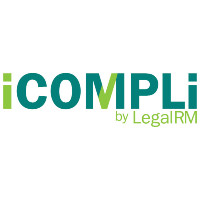 By Legal Futures Associate iCompli
By Legal Futures Associate iCompli
If your law firm is undergoing a digital transformation, you’ll have learned that not everything can be digitized and put into electronic storage. All firms have a repository of original documents that need to be retained. The vast majority of these will be “wet ink signature” – typically relating to real estate, wills, trust funds, patents, copyright and trademark. How are they best managed?
The challenge is that these documents must be preserved – maybe in safes or ideally in fire suppression vaults – more or less in perpetuity. They must also be produced as and when a real estate deal is done; or a client wants to change their will; or their executors come looking for it; or a court asks to see a document for whatever reason. It’s not acceptable to produce a scan and there’s no way to recreate an original. They can’t be reconstructed by going back through electronic files. In the US, in particular, it’s vital that original property deeds are produced. They constitute a vital record when there’s a dispute or sale, and there is no substitute.
It’s at this point that the firm learns how good its systems of document storage really are. You could also learn the high cost of failure. If a document can’t be located, the least worst-case scenario is that you turn your offices upside down and find it. If the document really can’t be found, it will dent the firm’s reputation and invite a malpractice suit.
Best practice
To fulfil best practice information governance, firms should be conducting regular inventories of these high-value original documents. However, in practice that’s easier said than done, especially if their number runs into tens of thousands.
Nowadays the routine solution is for firms to use barcoding technology. This enables regular, but nevertheless highly laborious, inventories because barcoding relies on “a line of sight” between reader and barcode. It means each folder and file must be physically accessed and individually scanned. We worked with a firm that was manually auditing to keep track of around 40,000 document folders and conducting a full inventory took one full-time staff member three months. Barcoding brings about improvements however still makes for slow work, which mitigates against conducting regular inventories.
Another drawback is that barcoding can’t help you if a document can’t be located where it’s expected to be. This is where Radio Frequency Identification (RFID) technology can step in as a superior modern and complimentary solution to barcoding.
Modern RFID technology is portable, economic, fast – each RFID tag can be read in less than 100th of a millisecond – and critically, RFID doesn’t rely on a clear line of sight to perform. All of which makes RFID a strong candidate to supplement barcodes for the management of critical, high value original documents and other high value artefacts. Exactly how your firm could deploy RFID technology – and how it can complete a job taking a full-time employee three months to manually achieve, in under an hour – will be covered in the next blog.
To find out more about how advances in Radio Frequency Identification (RFID) technology can offer a highly effective, time saving way to keep track of vital pieces of paper join our ILTA Masterclass where Chris Giles from LegalRM and Chris Francis from Allen & Overy will be offering their experience of efficiently safeguarding documents. Click here to register.










